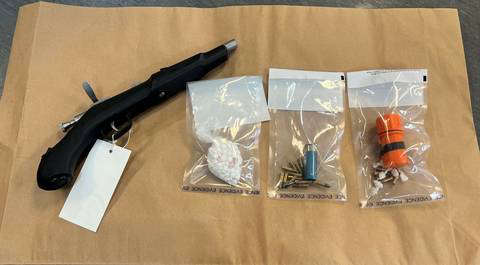
The Council of Canadian Academies released a report titled 'Top Climate Change Risks' which highlighted 12 areas at major risk of damage from climate change.
The Council of Canadian Academies released a report titled 'Top Climate Change Risks' which highlighted 12 areas at major risk of damage from climate change.
The 12 areas are: agriculture and food, coastal communities, ecosystems, fisheries, forestry, geopolitical dynamics, governance and capacity, human health and wellness, Indigenous ways of life, northern communities, physical infrastructure, and water. These risks were chosen based on potential for damage and urgency.
The report describes steps to adapt to these risks and the priority of each risk.
Dr. Bronwyn Hancock, Associate VP of Research Development at the Yukon College, says it's not too late, but the time to act is now "The thing that's really heartening is that we found that adaptation potential for lots of those risks, or our ability to reduce our vulnerability, or to be more resilient, is really high. So with the new adaptation action we can actually offset a lot of those risks. I think that's heartening but there's certainly urgency to act and there's certainly increasing impacts as a result of these risks, all across the country."
The discussion of climate change has been increasing in the past months as many communities, including Whitehorse, have put forward motions, or discussed declaring a climate change emergency. The introduction of the Carbon Tax has also increased debates about the best way to handle the changing environment.
Studies surrounding permafrost thawing have also been frequent lately, with new evidence showing possibly devastating impacts of melting permafrost. On June 10th, 2019, a study from the University of Fairbanks Alaska showed permafrost melting 70 years earlier than expected and at a rate 240 times considered normal.
When permafrost melts, it can release heat trapping gasses into the atmosphere like carbon dioxide and and methane. There is also the risk of flooding, erosion of infrastructure, and possibly even reanimation of diseases trapped in frozen organic matter.
Brian Horton, Manager of Northern Climate Exchange at the Yukon, says action is needed when it comes to thawing permafrost. "Permafrost is certainly affecting infrastructure, and it's affecting landscapes all around Yukon, N.W.T. and into Nunavut. So we've been working with communities and with highways, infrastructure, managers, engineers, trying to understand just how much the permafrost is changing, and to propose measures to help."
The next few years will prove crucial to the outcome of our environment in regards to climate change. The goal of the report is to outline the next steps to take and how to adapt to our shifting climate.



 Math'ieya Alatini elected CYFN Grand Chief
Math'ieya Alatini elected CYFN Grand Chief
 Watson Lake man charged in firearm robbery
Watson Lake man charged in firearm robbery
 House fire in McIntyre contained
House fire in McIntyre contained
 RCMP plane crash caused by faulty sensor: TSB report
RCMP plane crash caused by faulty sensor: TSB report
 New Fireweed Mental Health unit opens at Whitehorse General Hospital
New Fireweed Mental Health unit opens at Whitehorse General Hospital
 Traditional learning camp opens at Whitehorse school
Traditional learning camp opens at Whitehorse school
 Yukon Schools introduce online registration for bus service
Yukon Schools introduce online registration for bus service
 Yukon Government unveils progress in healthcare transformation with 2024 Putting People First annual report
Yukon Government unveils progress in healthcare transformation with 2024 Putting People First annual report
 Whitehorse Emergency Shelter unveils New Artwork celebrating Yukon First Nations culture
Whitehorse Emergency Shelter unveils New Artwork celebrating Yukon First Nations culture
 Former Whitehorse City Councillor Ted Laking announces bid for Yukon Party nomination in Porter Creek Centre
Former Whitehorse City Councillor Ted Laking announces bid for Yukon Party nomination in Porter Creek Centre
 Yukon Government seeks applicants for new Health Authority Board
Yukon Government seeks applicants for new Health Authority Board
 Canada Post strike looms, Yukoners brace for disruption
Canada Post strike looms, Yukoners brace for disruption
 Driver charged in fatal collision that killed Yukon Government Deputy Minister and injured Minister
Driver charged in fatal collision that killed Yukon Government Deputy Minister and injured Minister
 Yukoners encouraged to apply for Northwestel's Northern Futures Scholarship Program
Yukoners encouraged to apply for Northwestel's Northern Futures Scholarship Program
 City of Whitehorse summer transportation maintenance work underway
City of Whitehorse summer transportation maintenance work underway
 Yukon Government seeks input on new downtown public school
Yukon Government seeks input on new downtown public school
 Indigenous leadership takes centre stage: Rebecca Chartrand and Mandy Gull-Masty appointed to key cabinet roles
Indigenous leadership takes centre stage: Rebecca Chartrand and Mandy Gull-Masty appointed to key cabinet roles
 Whitehorse prepares for Annual 20-Minute makeover
Whitehorse prepares for Annual 20-Minute makeover
 RCMP conducting training exercises on Schwatka Lake
RCMP conducting training exercises on Schwatka Lake
 CYFN makes history as winner of prestigious Arctic Inspiration Prize
CYFN makes history as winner of prestigious Arctic Inspiration Prize